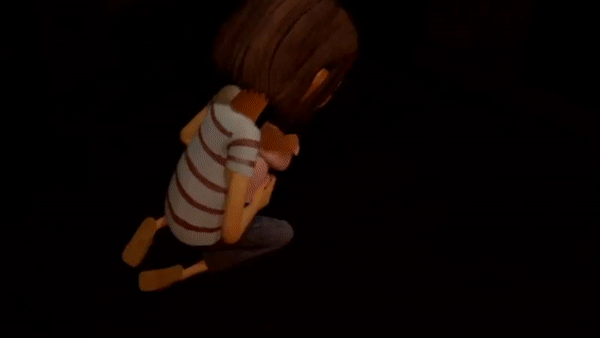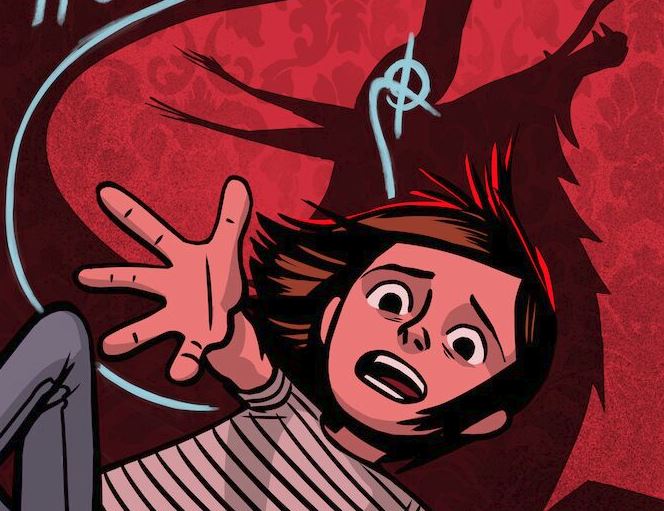It’s extremely easy to become jaded. I’ve played countless video games over the years and reviewed hundreds of games and VR experiences at this point, murdering a truly innumerable number of virtual characters. I’ve slain dragons, saved the universe, and rescued dozens of princesses. While plenty of video games have made me cry, smile, and laugh, it’s highly rare to play experience something that makes me really feel like I am connecting with a digital, virtual being.
But that’s exactly what Wolves in the Walls: It’s All Over accomplished.
I originally tried the first chapter for Wolves in the Walls over a year ago, it was the debut for Fable Studio, a brand new VR content studio founded by ex-Oculus Story Studio creators. This means many of the minds that worked on things like Lost and Dear Angelica, such as Fable founder Edward Saatchi, are teaming up again to continue making powerful VR experiences.
Wolves in the Walls: It’s All Over is the first two chapters, combined together as one experience, and lasts about 20 minutes. It’s premiering at Tribeca this week, but Saatchi sent me a build a few days ago to try at home.
Earlier this year I talked to Saatchi about their pivot to becoming a “virtual beings” company rather than just another “VR experience” creation studio and that switch was landmarked by the announcement of Whispers in the Night. It features the same exact 8-year old girl from Wolves in the Wall, Lucy, but is all about talking to her and sharing secrets.
“Memory is the core concept for us in Wolves [in the Walls] so that everything you do is remembered,” Saatchi says. “We don’t want Lucy to become a horrifying person from what you do, she has her own journey and her own life and her own story, but she will remember. We’re focused on what we call an ’emotional POV’ almost like you’re wearing Lucy glasses.”

It’s a good analogy because it all begins with Lucy literally drawing you into existence out of chalk. She erases the first version of your eyes because she accidentally makes you too tall, then redraws you at her height. Throughout the experience she is looking at and talking directly to you, as a person. She makes you feel grounded and real even though you’re actually her imaginary friend and experience the world how she does.
One of my favorite ways this manifested itself is in how the environment is designed. Many of the physical aspects of scenes such as the scale of a room or the furniture inside is distorted or twisted to seem bigger than it really is because she’s such a small child. In one scene Lucy’s mother actually subtly changes in size as her attitude shifts. In the GIF above you can see the world around you shift and change in real-time as Lucy guides your attention and interacts with things. It looks snazzy in a GIF, but seeing it for yourself in VR, standing there with Lucy, is magical.

“Wolves [in the Walls] and Dear Angelica started development at the same time, along with Quill” Saatchi says. “Quill was being developed as we were making Wolves so we used it to start doing visual development…We wanted to have a scene that looked like a therapy drawing, like Lucy digesting the trauma of what’s happening and you’re in her imagination and seeing how she is experiencing it. So not CG like the rest, but instead a more Quill painted look…We wanted to take what we did in Dear Angelica to the next level in terms of being in a character’s mind.”
From what I’ve seen Wolves in the Walls tells a powerful story full of layers and nuance for those that care to look, but also has plenty of pure entertainment to keep people entertained on a surface level. Everything from the way Lucy looks at you to the things you do to interact with her sells the illusion that she actually sees you and cares what you think.
She might look like a cartoon, but she feels real.
Wolves in the Walls: It’s All Over (aka Chapter 2) is debuting this week at Tribeca. It’s co-created by Pete Billington and Jessica Shamash and is directed by Pete Billington and is based on the illustrated book Wolves in the Walls by Neil Gaiman and Dave Mckean.
There is no firm release date for the entire Wolves in the Walls story (which will eventually include a third chapter and total around 40 minutes altogether) or Whispers in the Night. Hopefully not too much longer so everyone has the opportunity to experience what Fable is building.
Let us know what you think down in the comments below!

























